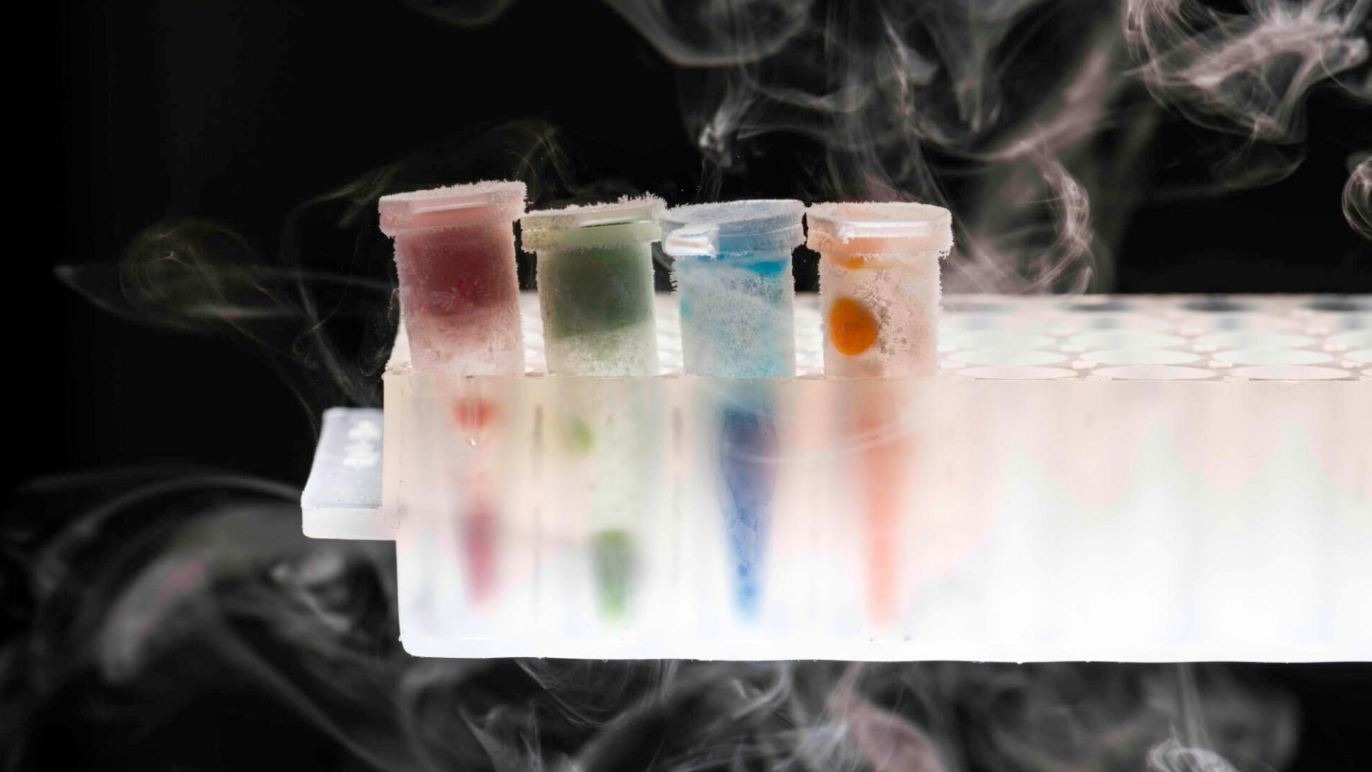Consider a world devoid of flora. The rapid depletion of possible plant-derived medications is a worrying trend, even though this extreme situation has not materialized.

Members of the University of Rochester’s iGEM team used bacteria cultures, pictured here frozen in liquid nitrogen, to make 3D-bioprinted bacteria samples as part of their project to replicate chemicals found in plants. Image Credit: University of Rochester/J. Adam Fenster
Tens of thousands of species of flowering plants are used medicinally around the world, but many of the pharmaceutical companies that control the US market mainly rely on imported raw materials, which have specific cultivation requirements. Climate change, invasive pests and diseases, and farming practices that struggle to fulfill the high demand for finished products all contribute to the threat facing many plant species.
In response to these issues, 10 undergraduate students from the University of Rochester developed novel techniques for more effectively replicating beneficial compounds present in plants, particularly some that are at risk due to climate change. The students, who went by the name "Team RoSynth," developed a low-cost 3D printing technology to maximize the production of pharmaceuticals and medications that are derived from plants.
The team submitted its work to the 2023 International Genetically Engineered Machine (iGEM) competition in November. This is an international competition where student-led teams compete to use synthetic biology to solve real-world challenges. Synthetic biology uses engineering to create biological components that are modeled after natural systems.
The Rochester team became the third most recognizable team in the country after their project, which was nominated for Best Hardware and Best Biomanufacturing Project, won a gold prize. The group faced 402 teams from six different continents.
Team RoSynth’s technology has huge potential to push forward the entire field of synthetic biology, allowing for straightforward, accessible production of new engineered living materials.
Anne S. Meyer, Associate Professor, Department of Biology, University of Rochester
An “Ingenious” Method of Bioprinting Hydrogels
Hydrogels are jelly-like materials consisting of water and polymers that can store and release biological molecules. Team RoSynth created a 3D bioprinter to manufacture these materials. The technique developed by the Rochester team is distinct in that it prints genetically modified yeast and bacteria in adjacent hydrogels, which are subsequently immersed in a liquid nutritional broth.
The two distinct species of microorganisms share the complicated task of producing the final product chemical, which facilitates and speeds up the process.
Bacteria and yeast must grow independently to prevent one from proliferating too quickly, and wiping out the slower-growing microbe is a crucial innovation. Nevertheless, the two germs must also be able to interchange molecules to synthesize the final product's chemical.
To solve this tricky problem, the students devised an ingenious solution, the yeast and the bacteria were 3D bioprinted in hydrogels, so the microbes were kept separate from each other, but the molecules they produced could exchange freely.
Anne S. Meyer, Associate Professor, Department of Biology, University of Rochester
With this method, plant-based compounds can be synthetically produced without the use of actual plants.
Rosmarinic acid (RA) was biochemically produced by the researchers as a test case. Usually, fern, sage, and rosemary are used to extract RA. It has been demonstrated to have anti-inflammatory and antioxidant qualities, and it is used as a flavoring and in cosmetics. Even though rosmarinic acid is not in danger, this extract was perfect for testing.
Meyer said, “Rosmarinic acid is a valued plant compound but was not toxic or hazardous to the students to produce, plus, the pathway to make it is pretty complex, consisting of a large number of enzymes that act sequentially.”
A Response to Climate Change
Beginning in early 2023, the team, which is entirely composed of students and has several faculty members available as advisors, started formulating project ideas. The COVID-19 pandemic, climate change, and Rochester's proximity to New York's agricultural centers inspired the team, giving climatic implications on plant-based chemical sources top priority.
Since we are located in Rochester, which is adjacent to the Finger Lakes region, a major agricultural area in New York State, we thought about how the impact of climate change will lead to decreasing crop yields over the coming years and impact local supplies of plants and plant-based compounds.
Catherine Xie, Department of Biology, University of Rochester
Medha Pan said, “Our iGEM team was focusing on the climate crisis and agricultural shortages that we have been facing, especially in the COVID era. We have seen firsthand the importance of having accessible and reliable medication.”
The cancer medication taxol, which is produced by yew tree species that have been designated as needing protection, and aspirin, which is made from the bark of willow trees, are two examples of specific medications that might profit from the techniques and technologies created by Team RoSynth.
An Affordable Bioprinter
The team's goal included developing an open-source, reasonably priced bioprinter that would enable others to investigate the production of synthetic plant-based compounds.
Allie Tay explained, “A typical bioprinter will cost over $10,000, but we engineered one under $500, we wanted to have a 3D bioprinter that would be accessible for labs to do this proof of concept with whichever molecules they choose.”
Because of this project, other scientists will be able to generate almost any plant-based chemical by modifying the genes and designing pathways in the bacteria and yeast. The team's Wiki page contains the bioprinter's design as well as instructions on how to assemble and operate it, enabling others to build and modify the technology for a range of applications.
By fusing state-of-the-art technology and nature, the team demonstrated that undergraduates are capable of leading ground-breaking projects in record time.
Allie Tay said, “Projects like these usually take years for Ph.D. or grad students to develop, and the fact that we are undergrads doing this and we were given from February to November I think that is a pretty big undertaking.”
iGEM: Biomanufacturing a Sustainable Future
Video Credit: University of Rochester